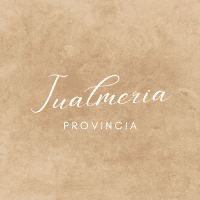How to Choose the Right Type of Enclosure for Exotic Pets Like Sugar Gliders?

As exotic pets continue to gain popularity, prospective pet owners often find themselves caught up in the thrill of owning such unique animals. One such intriguing species is the sugar glider, a small, marsupial native to Australia. Known for their soft fur, large eyes, and love for sweet food, these little pets have won over the hearts of many animal lovers. However, owning a sugar glider, like any pet, requires proper care, including the selection of an appropriate enclosure. In this article, we will delve into how to choose the right type of enclosure for pets like sugar gliders.
Understanding Sugar Gliders
Before setting up an enclosure, it’s vital to understand the nature and needs of sugar gliders. These tiny marsupials are nocturnal, and they lead an arboreal lifestyle in the wild, meaning they spend most of their time in trees. They are social animals that thrive in the company of their own species.
A voir aussi : How to Design an Eco-Friendly and Sustainable Living Space for Your Pet?
Sugar gliders have a unique diet that includes a variety of fruits, vegetables, and insects, with a particular fondness for anything sweet. The term ‘sugar’ in sugar gliders stems from their love for sugary foods, including fruits and nectar.
The Importance of the Right Enclosure
Choosing the right enclosure for your sugar glider is vital. Sugar gliders are active and playful animals. They love to glide, jump, and explore, so they require a cage that allows them to express these natural behaviors.
Avez-vous vu cela : What Are the Best Techniques for Introducing a New Pet to a Household with Elderly Pets?
The wrong type of enclosure can lead to a host of problems, including stress, depression, and even physical ailments. For instance, a cage that is too small or doesn’t have enough vertical space can limit a sugar glider’s movement, leading to poor muscle development and health issues. Similarly, without the right type of environment, sugar gliders can become bored or anxious, which can affect their overall well-being.
What to Look for in a Sugar Glider Cage
When shopping for a sugar glider cage, there are several things to consider. The cage should be tall, as sugar gliders like to climb and glide. The minimum recommended size is 24 inches wide, 24 inches deep, and 36 inches tall, but bigger is always better.
The cage should be made of a non-toxic material and should have a solid floor to prevent foot injuries. Wire cages are a good option as long as the spacing between the wires is small enough to prevent the sugar glider from escaping or getting its head stuck.
The cage should also have multiple levels and plenty of toys and accessories to keep the sugar glider entertained. Hammocks, ropes, and branches can simulate a natural environment and provide opportunities for play and exercise.
Creating the Right Environment Inside the Cage
Once you’ve chosen the perfect cage for your sugar glider, the next step is to create the right environment inside it. This involves adding the right items and ensuring the cage is placed in a suitable location.
Start by adding a nesting box in which your sugar glider can sleep. Fill it with soft bedding material like fleece, which is safe and comfortable for your pet. Avoid using materials like cedar or pine shavings, as they can cause respiratory problems.
Next, add toys and accessories that your sugar glider can play with and explore. This includes branches, ropes, and hammocks, as well as toys designed specifically for sugar gliders.
In terms of location, place the cage in a quiet and low-traffic area of your home, and avoid placing it near windows or vents, which can create drafts. Keep in mind that sugar gliders are sensitive to temperature changes and do best in warm, steady conditions.
Providing the Right Diet and Care
Finally, no matter how perfect your sugar gliders’ enclosure may be, it’s essential to provide them with the right diet and care. Remember, these are exotic animals, not your average pets. They have specific dietary needs that must be met to keep them healthy and happy.
Sugar gliders thrive on a varied diet of fruits, vegetables, and protein sources like insects or cooked eggs. Avoid feeding them dog or cat food, as these do not provide the necessary nutrients. Also, limit the amount of sugar in their diet, as too much can lead to obesity and other health problems.
In terms of care, sugar gliders require daily interaction and socialization. They are social animals by nature, and they can become depressed or anxious if they are left alone for long periods. Make sure to spend time with your sugar glider every day, playing with them and allowing them to explore outside their cage under supervision.
Remember, owning a sugar glider is a long-term commitment. These animals can live up to 15 years in captivity, so be sure you’re ready for the responsibility before bringing one home. With the right care and environment, sugar gliders can make wonderful, loving pets.
Remember, the key to a happy and healthy sugar glider is a suitable enclosure, a balanced diet, and attentive care. If you can provide these, your sugar glider will feel right at home in your home.
Understand the Commitment Involved
Owning an exotic pet like a sugar glider is not a decision to be taken lightly. These adorable creatures require a significant amount of time, energy, and resources to thrive in captivity. Remember, sugar gliders are social animals, and they form strong bonds with their human caregivers. They require daily social interaction, which could be playing with them, handling them gently, or allowing them to climb on you.
As previously mentioned, sugar gliders can live up to 15 years in captivity. This means that when you bring a sugar glider into your home, it’s a long-term commitment. You’re not just buying a pet; you’re adding a new member to your family.
In addition to time and affection, sugar glider care also involves financial commitment. Regular visits to a vet who specializes in exotic animals are crucial to ensuring your sugar glider’s health. Be prepared to bear the cost of any necessary treatments or procedures. Also, a proper glider diet of fresh fruits, vegetables, and protein can add up over time.
Moreover, owning an exotic pet may not be legal in all places. Make sure to do your research and check local laws and regulations before bringing a sugar glider home. Different locations may have different rules regarding exotic pet ownership, including permits, inspections, and microchipping.
The Joy of Owning a Sugar Glider
Despite the responsibilities and commitments involved in owning a sugar glider, many owners would agree that the joy these little creatures bring is immeasurable. They are known for their playful, curious, and affectionate nature. The incredible bond that they form with their caregivers is something truly special.
Sugar gliders are unique pets with their own set of qualities and quirks. Observing their behavior, watching them glide and play, and interacting with them can be a source of endless amusement and fascination.
Their compact size and love for snuggling also make them excellent companions, whether you’re at home or on the go. Many sugar glider owners love taking their pets with them wherever they go, safely tucked away in a pocket or a specially designed pouch.
Conclusion
Choosing the right enclosure for your sugar glider is just the beginning of a fascinating journey. Owning a sugar glider is not simply about providing a glider cage or the right glider diet. It’s about understanding their needs, their behavior, and their unique personalities. It’s about dedicating time, effort, and heart into creating a loving environment for these extraordinary pets.
Remember, sugar gliders are social animals that crave companionship and interaction. They require constant care, attention, and above all, your love. In return, they’ll bring joy, laughter, and a unique sense of companionship to your life. So, if you’re ready for the commitment and fascinated by these incredible creatures, a sugar glider might just be the perfect pet for you.
After all, there’s a reason why these small marsupials have won the hearts of so many around the world. With their large, expressive eyes, soft fur, and love for sweetness, sugar gliders are truly one of a kind. With the right care and attention, you too can experience the joy and fulfillment of sharing your life with these remarkable exotic pets.
